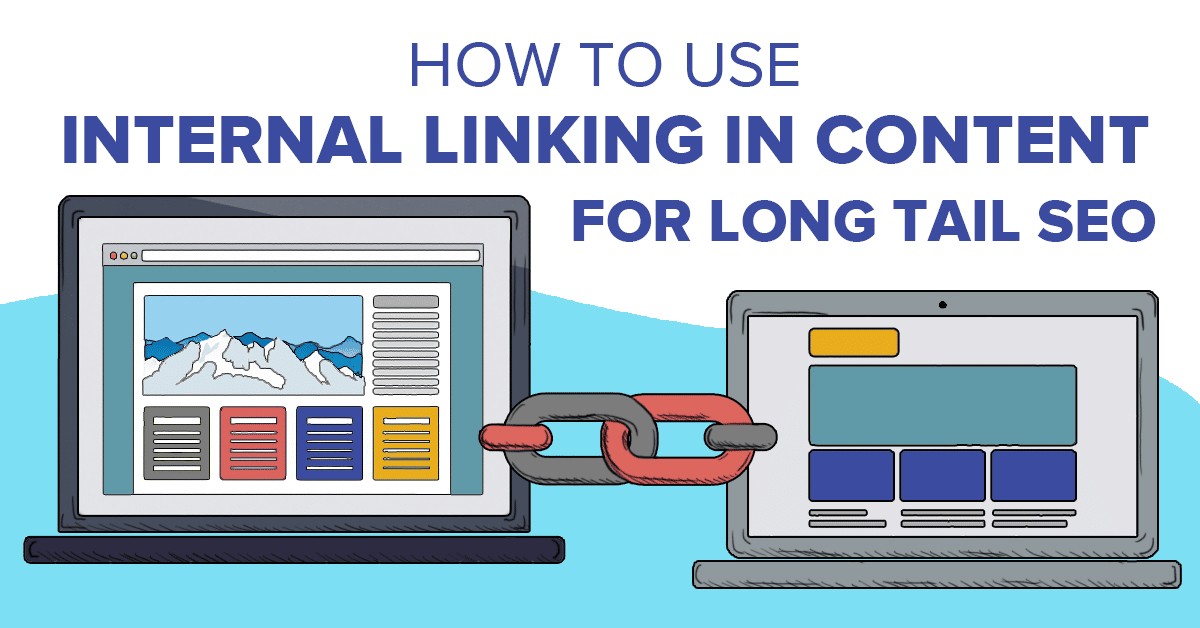How to Use Internal Linking in Content for Long Tail SEO
The web is riddled with excessive SEO strategies that often tend to exclude a crucial practice in long-tail SEO: internal linking. But this practice is crucial to long-tail SEO.
Strategic internal linking is an SEO power technique, particularly for content marketing. It is one of the simplest and most straightforward ways to experience an SEO uptick. Internal linking among blogs or other content is something that you can do regularly.
No matter how much SEO skill you have, this article helps you to brush up on your internal linking basics.
What is Internal Linking?
Internal links connect one page of a website to other pages of the same website. Keep reading to see if you can spot how we use internal linking in this article.
Internal linking has three primary aims:
- Helping with website navigation
- Defining the hierarchy and architecture of the website
- Distributing ranking power and page authority throughout the site
Internal links make it convenient for search engines and users to find content within a website. If a website features more internal links, the search engines take it as a signal that the website is of value. As you want to rank for the best keywords, it is important to implement internal linking to your content in your SEO strategy. By the way, did you catch the internal linking we just used in this paragraph? (Hint: “best keywords”)
Using Internal Linking in Content for Long Tail Keywords
Internal linking plays a significant role in long-tail SEO. Without it, your pages are not going to rank favorably. Here are a few tips to help you use internal linking in your content for long-tail SEO.
1. Create Loads of Content
Numbers play a crucial role. To make your internal linking efforts effective enough for long-tail SEO, you have to make sure you have several internal pages.
Before you start, make sure you have the SEO basics and a robust content marketing strategy. After you have a strong foundation, you can decide how to implement the internal linking strategy.
Start by researching different keywords and implement them into your long-tail SEO content. It turns weak content into a powerful ingredient for your overall SEO strategy.
2. Give Good Intent
You don’t have to dilute your content simply because you are using it for SEO. Even SEO content should be informative and share details on how a particular product or service can be beneficial for customers.
Using common phrases like ‘Click Here’ or ‘Read More’ are great calls-to-action (CTA) but they are not as helpful for long-tail SEO. These phrases should be descriptive and include keywords. Visitors should know the perks that come with clicking on the link.
3. Use Descriptive Anchors
Let the anchor text handle everything. It should be descriptive and feature the keyword of the web page that you are linking to. Google loves it when a text contains a targeted key phrase as it helps in determining the page’s relevance.
As you want your audience to get real value from the content you are posting, you have to come up with creative ways to frame the message. Yes, you will use long-tail keywords to pass along the message. However, it shouldn’t be apparent. The text should have a natural flow and should not look out of context.
Often, newbies have a difficult time researching and creating relevant keywords to include in the text body. If you are one of them, here are 8 essential tools for optimizing your site’s SEO.
4. Be Mindful of the Number of Links
Long-tail SEO communicates directly with the consumers and tells them what you are selling. However, you will also have to make sure that the search engines understand this.
Don’t overdo it when it comes to the total number of links you are putting on any page. Generally, 3-4 internal links is good enough if the content is 1000 words or less. Going beyond this could be overkill. If you keep the number lower than this, it will not be enough to stand out.
5. Use Good Link Placement
As you make yourself comfortable with internal linking, make sure you are not over promotional with your practices. You simply need to have links that add value to the readers. Don’t link to pages that are not relevant to the content.
While linking, context is important. Remember, not all links are created equally. You have to give importance to in-body links (ones that are part of the content, not the menu) as they are prioritized more than links found somewhere else in navigation.
6. Check Content Before Posting
Make sure the links that you are using actually work. Broken links can harm your SEO strategy in a big way. Always read your content and check the links you have added to be sure they are not broken. To spot them easily, you can use a “broken link checker” software. For an even easier solution, call us. Our team of SEO experts can take care of all of your SEO needs.
7. Avoid Creating Large Blocks of Site-Wide Footer Links
Large blocks of footer links used to be a common practice on real estate and travel websites. These websites added their most prized keyword-rich internal links at the footer.
Google now looks at this practice as a “black hat” (or sneaky) policy and can actually penalize your website for doing this. Sure, you can add a few links at the bottom of your website to help users easily navigate your site, but too many of them should be avoided. It is frowned upon, and a turn-off for many readers.
Final Verdict
Internal linking for long-tail SEO doesn’t have to be difficult, overwhelming, or complicated. What’s great is with proper internal linking, you can experience a stronger and better link profile and SEO outcomes.
Go back to your old content. Check to see if there is sufficient internal linking. It helps you connect with the audience and rank higher on the search engine pages.
Want to learn more about our SEO Services? Click here to learn more.
For more help, book a free strategy session now. We are your virtual marketing department and we can’t wait to talk to you.
SEO No To The Quo



